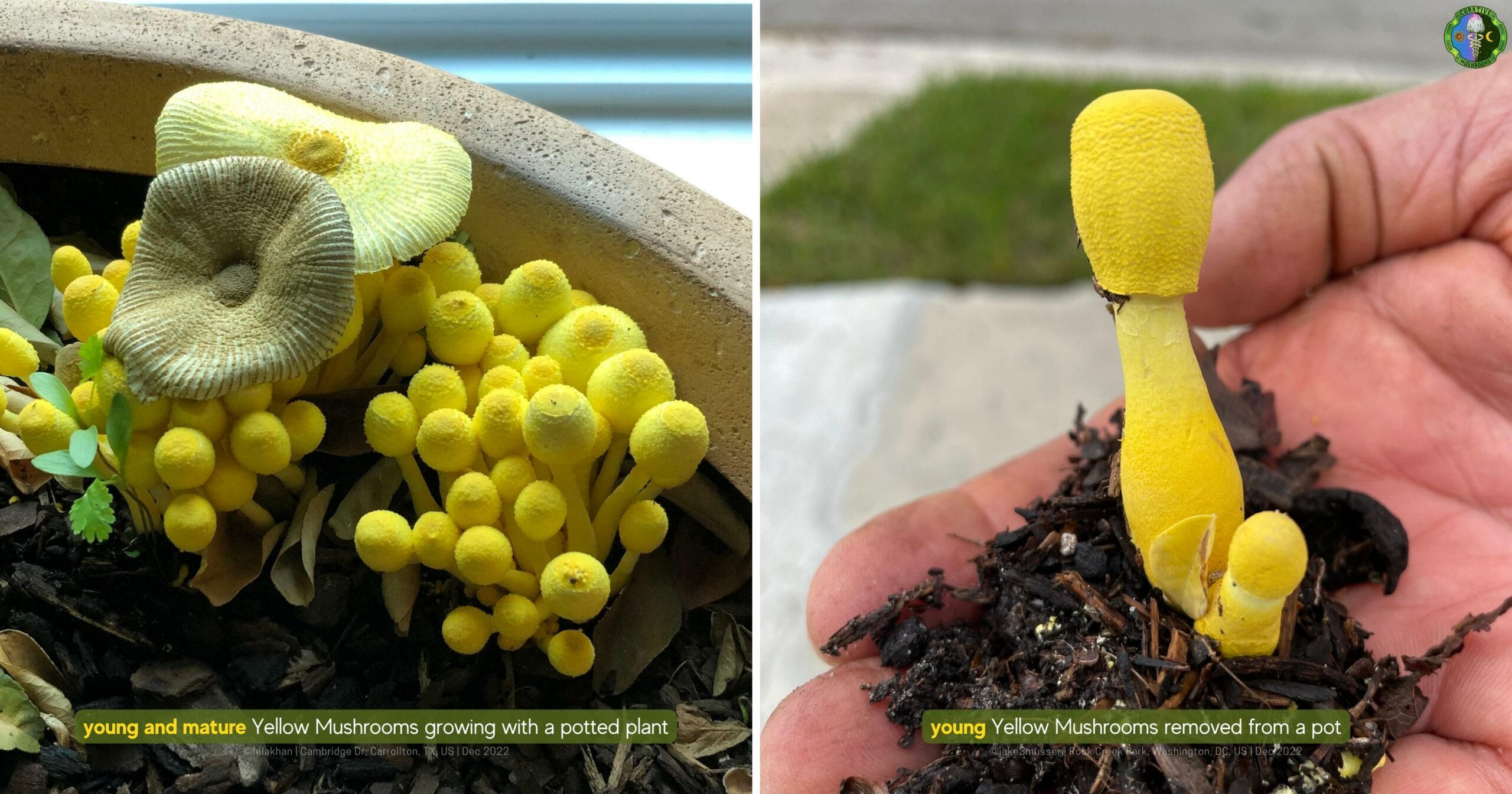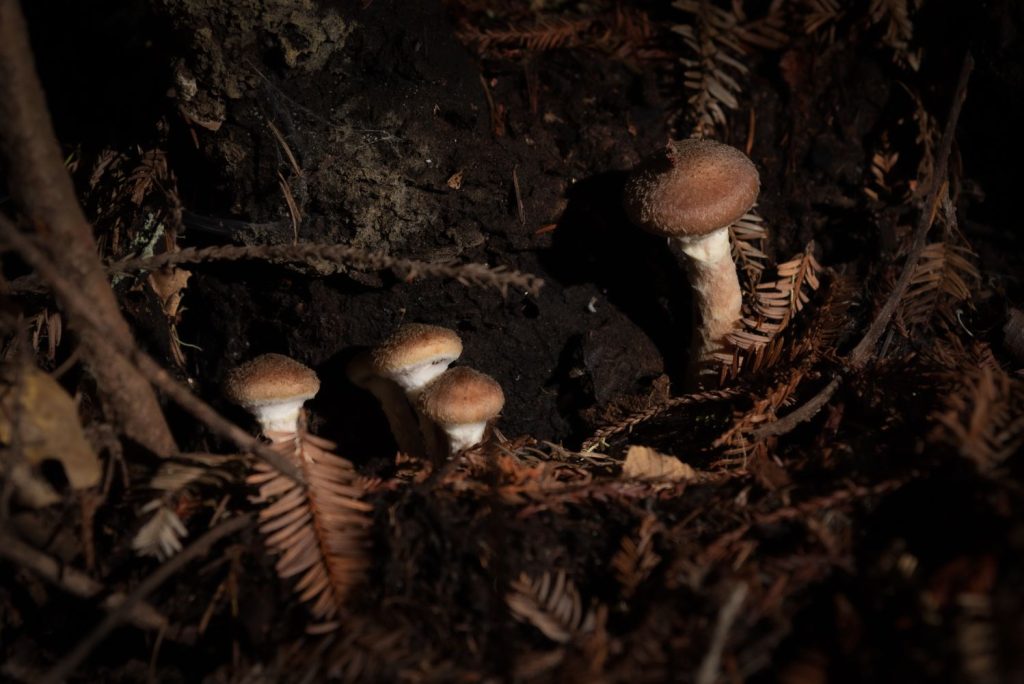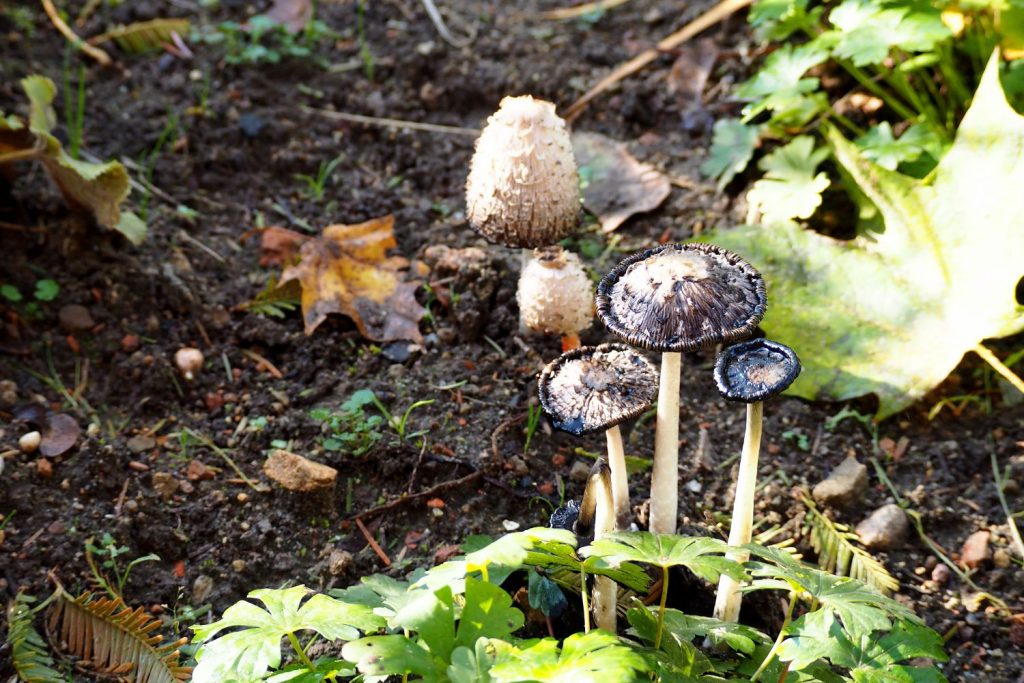I study landscape ecology and through my studies have discovered a love for plants. Plants are not only beautiful, but also have countless fascinating survival strategies. To bring a bit of nature into my home as well, I nurture my houseplants and herbs on every possible windowsill. Favourite fruit: rhubarb and all kinds of berries Favourite vegetables: onions and garlic
Mushrooms are very special indeed and are usually a delight to see on a walk. However, it is less appealing when these mushrooms appear in your garden.
Not all mushrooms in the garden pose a problem. Some are essential for healthy trees whereas others cause damage. We show you how to deal with mushrooms in your garden and give a brief insight into the common types of garden mushrooms. You can also find out which varieties are edible, undesirable or even poisonous.
It can be alarming to find mushrooms suddenly sprouting up in your carefully tended herb garden. At first glance, these fungal invaders may seem like a sign of trouble or decay However, mushrooms growing among your herbs are most likely harmless or even beneficial. With some basic knowledge, you can determine if the mushrooms are a help or hindrance, and take appropriate action
What Causes Mushrooms to Grow in an Herb Garden?
Mushrooms and other fungi naturally occur in soil due to spores that are continuously floating through the air. When conditions are right, the spores germinate and grow underground networks called mycelium. Eventually, the mycelium produce aboveground fruiting bodies that we recognize as mushrooms.
The main factors that encourage mushrooms to form in your herb garden are
-
Moisture: Mushrooms thrive in damp conditions. Irrigating your herbs creates perfect mushroom habitat.
-
Shade: Mushrooms grow best with limited sunlight since they cannot photosynthesize. The shade around herbs and under their foliage promotes mushrooms.
-
Organic matter: Mushrooms feed off decaying material like compost, mulch, leaves, and roots. Herb gardens provide plenty of food for fungi.
-
Mild temperatures: Most mushrooms prefer temperatures between 60-75°F. Typical herb garden environments fall within this ideal range.
-
Acidic soil: Herbs prefer slightly acidic soil, which also suits most mushrooms.
If moist, shady spots with ample organic matter exist in your herb garden, that’s an open invitation for mushrooms to move in!
Are Mushrooms Harmful to My Herb Garden?
The good news is mushrooms are almost never detrimental to an herb garden, and often provide benefits. There are a few key advantages to having mushrooms around your herbs:
-
Nutrient cycling: As mushrooms decompose organic matter, they release nutrients like nitrogen and phosphorus into the soil for plant uptake.
-
Improved soil structure: The underground mycelium physically hold soil particles together, improving aeration and water retention.
-
Increased disease resistance: By colonizing plant roots, mycorrhizal fungi boost the herb’s immunity to diseases.
-
Drought tolerance: Mycelium help optimize soil moisture conditions so herbs better withstand drought.
-
Weed suppression: A healthy community of soil fungi leaves less room for weed seeds to germinate.
The main downside of mushrooms is the potential for contamination if a poisonous species emerges in an edible herb garden. Always verify an unrecognized mushroom is not toxic before harvesting any nearby herbs.
What to Do About Mushrooms in Your Herbs
When mushrooms appear among your herbs, you can choose whether to leave them or remove them. Here are your options:
Leave the mushrooms
This easiest option allows nature to take its course. The mushrooms will likely disappear on their own after releasing spores and exhausting their food supply. You get the soil benefits of fungi without any effort. Just monitor for potentially dangerous mushrooms.
Remove the mushrooms
If you don’t like the appearance of mushrooms or worry about contamination, gently pluck any mature mushrooms that emerge. Compost or bury them away from the herb garden. This prevents spore spread but doesn’t disturb the helpful underground mycelium.
Create inhospitable conditions
You can make the herb garden less inviting to new mushrooms by allowing soil to dry out between watering, aerating regularly, or mulching with sterile materials like gravel or landscape fabric. However, this may negatively impact your herbs as well.
Use hydrogen peroxide
Applying a 3% hydrogen peroxide solution directly on mushrooms can hinder further growth. But avoid getting it on soil or plants, as it may damage beneficial organisms.
Apply vinegar spray
A spray of 1 part vinegar diluted with 4 parts water will kill mushrooms on contact. Again, avoid herb foliage and widespread soil exposure to prevent harm.
Solarize the soil
Covering moist soil with clear plastic for 4-6 weeks warms the ground to steaming temperatures that can kill fungi and other organisms. Replenish nutrients afterwards.
Rotate herbs
Moving herbs to different garden beds each year limits the buildup of mycelium in any one location.
By understanding what causes mushrooms and learning to coexist with them, you can confidently enjoy lush herbs and healthy soil. With a few management techniques, mushrooms don’t need to be an eyesore or source of anxiety in your beloved garden.

Are mushrooms in the garden good or bad?
Mushrooms in the garden are neither good nor bad. However, they usually occur when the conditions for garden plants are suboptimal. Since they indicate problematic conditions in the garden, they are often considered a problem themselves. Mushrooms often occur where there is a lot of shade, high soil moisture or even waterlogging plus a lot of rotting organic material. Similarly, a low pH favours the proliferation of mushrooms as this tends to inhibit the bacteria in the soil. Cool temperatures also help mushrooms to thrive. If all these conditions occur at once in the garden, it is quite possible that mushrooms will sprout from the ground or on wood here. These factors favour each other in a certain way and support the underground fungal network in forming fruiting bodies. These then become the mushrooms that we see above the ground.

Since there are naturally many fungal spores in soil and on wood, it is quite normal for mushrooms to appear in the garden. Wood fibre in the substrate can also cause them to grow in purchased potting soil. Basically, mushrooms are fascinating organisms that can appear as tasty, edible mushrooms or as deadly poisonous fungi and fulfil important tasks in ecosystems.
The mushrooms themselves are not bad. In fact, they are important for the decomposition of organic material or for the trees with which they form a symbiosis. However, as they often indicate soil conditions that are not optimal for many plants, mushrooms in flower beds can be a sign of problems in the garden. Some types of mushrooms that form so-called fairy rings cause problems in the lawn – but most disappear quickly on their own.
At a glance: what causes mushrooms in the garden?
- Shade
- High humidity
- Low temperatures
- Organic material such as wood or wood debris in or near the soil
- Low pH value

You want to know who’s behind Plantura?


I study landscape ecology and through my studies have discovered a love for plants. Plants are not only beautiful, but also have countless fascinating survival strategies. To bring a bit of nature into my home as well, I nurture my houseplants and herbs on every possible windowsill. Favourite fruit: rhubarb and all kinds of berries Favourite vegetables: onions and garlic
Mushrooms are very special indeed and are usually a delight to see on a walk. However, it is less appealing when these mushrooms appear in your garden.

Not all mushrooms in the garden pose a problem. Some are essential for healthy trees whereas others cause damage. We show you how to deal with mushrooms in your garden and give a brief insight into the common types of garden mushrooms. You can also find out which varieties are edible, undesirable or even poisonous.
GARDENING WITH MUSHROOMS, Winecap Herb Garden
FAQ
Should I remove mushrooms from my herb garden?
The answer, in general, is that mushrooms in your garden are fine. Actually, the mushroom you see is just the portion of a larger fungal network that lives in all living soil all the time. Yep! Soil is alive!
Should I let mushrooms grow in my plants?
As they said, fungi help make nutrients in the soil. So no, they are not harmful to your plants. Simply remove the mushrooms (wash your hands after), and allow the soil to dry out.
Why do mushrooms grow in my herb garden?
Too much or the wrong mulch, an excess of dead plant material and dead tree roots in the soil all contribute to mushrooms’ food source. Overwatering is also conducive to their growth, as is soil cooled by lower temperatures, shade and excess mulch.
Should I remove mushrooms from my raised garden bed?
-
Beneficial Roles:Mushrooms are fruiting bodies of fungi that play a crucial role in soil health by decomposing organic material like mulch and dead plant matter.
-
Signs of a Healthy Ecosystem:The presence of mushrooms indicates a thriving fungal network in your soil, which is essential for plant growth and nutrient cycling.
-
Not Harmful to Plants:Mushrooms themselves don’t harm plants; they primarily feed on dead organic matter and are not root pathogens.
-
Potential Reasons for Removal:
- Aesthetic Concerns: If the mushrooms are unsightly or you simply don’t want them in your garden bed, you can remove them.
- Toxicity (Less Likely): While most garden mushrooms are harmless, some may be toxic. If you have children or pets, it’s best to remove them to be safe.
- Excessive Growth: If mushrooms are growing excessively and potentially crowding other plants, you may consider removing them to improve overall garden health, according to a post on Reddit.
- Aesthetic Concerns: If the mushrooms are unsightly or you simply don’t want them in your garden bed, you can remove them.
-
How to Remove (If Needed):Simply pull or dig up the mushrooms, being sure to discard them properly (e.g., in a bag) to prevent the spread of spores.
-
No Need to Worry About the Fungus:Removing the mushroom itself won’t kill the fungus. The mycelium (the fungal network) remains in the soil and continues to function, according to a post on Reddit.
